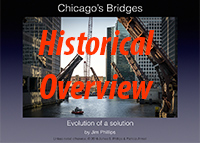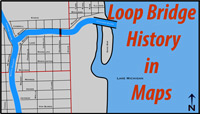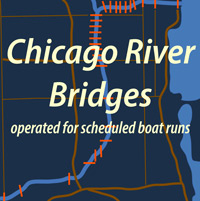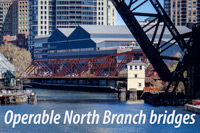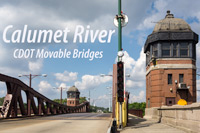106th St Bridge - Calumet River
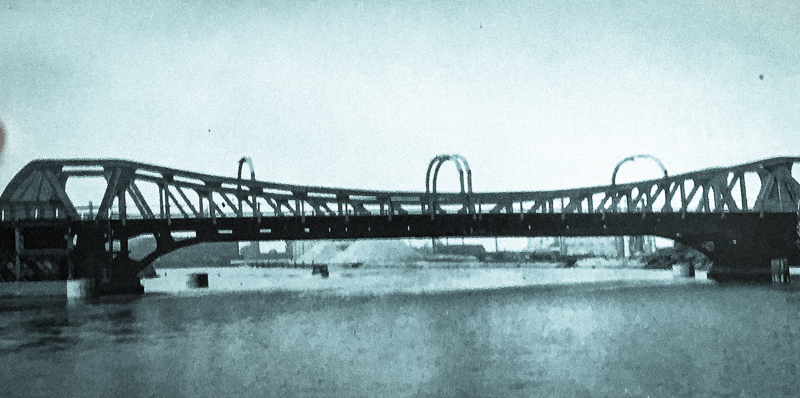
106th street bridge - 1929 CPW Annual Report
The first bridge built at 106th street was a hand operated swing bridge built in the 1890's. This bridge was converted from hand power to electric power in 1923 and it was the last hand operated Chicago owned bridge.
Planning for the current bascule bridge began in 1926. Construction began in November of 1927. Initial activities involved setting up a detour bridge to make room for bascule construction. This was accomplished by moving the existing swing bridge and building by temporary approaches for the detour. Superstructure work started in October of 1928 and the 106th street bascule opened to traffic on September 28, 1929. Bridgehouses were completed in July 1931.
When this bridge was completed, its 250.5 ft. trunnion-to-trunnion span was the longest of any of Chicago's trunnion bascule bridges. This was a short-lived distinction. The Wabash Avenue bridge, which opened in 1930, surpassed it with a 269 ft. trunnion-to-trunnion span.
The 106th street bridge was one of twelve bridges that were dedicated during the reign of William “Big Bill” Thompson. Most of these dedications were elaborate affairs and the dedication for the 106th street bridge was no different.

106th street bridge today
As described in the Chicago Tribune, “thousands” defied a heavy rain to attend the ceremony which consisted of a 3 mile long parade with floats depicting transportation progress from the late 1600's to 1929. Airplanes circled overhead, the U.S.S. Wilmette was docked at the bridge, and there was a ribbon cutting ceremony. In this case the “ribbon” was made up of about 30 young women in costumes representing the “principal thirty nations whose people have helped to build up South Chicago and the Calumet district.”
Festivities concluded with a ceremonial bridge lift for the U.S.S. Wilmette and speeches. An interesting absence noted in the paper was Mayor Thompson. Richard Wolfe, Public Works Commissioner, was the mayor's stand-in as emcee.
Additional information about this bridge may be found at Historicbridges.org.

106th street bridge plaque
****
Sources:
CPWD Annual Reports 1890-1938
“ 'Queens' of 30 nations to appear at bridge opening”; September 28, 1929; ProQuest Historical Newspapers: Chicago Tribune
“Parade marks dedication of new 106th street bridge”; September 29, 1929; ProQuest Historical Newspapers: Chicago Tribune

